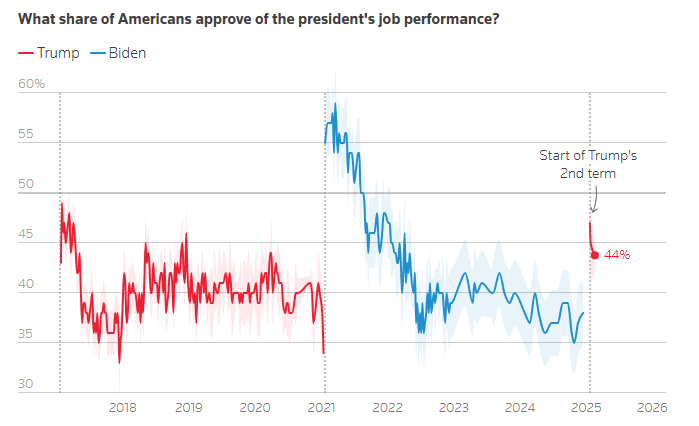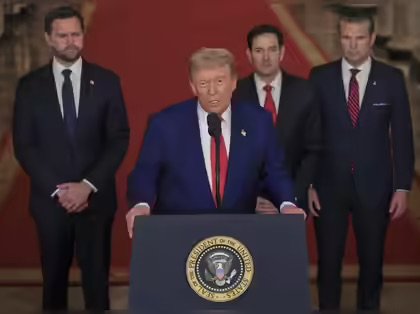Trump Approval Rating Drops to Lowest Point in Second Term
President Donald Trump’s approval rating has hit its lowest point in his second term, with multiple polling organizations showing a significant decline in public support during June 2025. The latest Gallup poll, conducted between June 2-19 among 1,000 adults, shows that Trump’s net approval rating stands at -17 points, with 40 percent approving and 57 percent disapproving. That is done from -10 points in May, the previous lowest result recorded by Gallup.

Multiple Polls Show Declining Support
Recent polling data reveals a consistent downward trend across major survey organizations. The latest YouGov/Economist poll, conducted between June 13-16 among 1,512 adults, put Trump’s approval rating at 41 percent, down 2 points since last week, with 54 percent disapproving, up 2 points. This represents a notable shift from the president’s higher approval numbers at the beginning of his second term.
The RealClearPolitics’ polling average shows that as of June 17, Trump’s approval stands at 46.5 percent, with 51 percent disapproving—a decline from June 3, when he held a narrower gap at 47.5 percent approval to 49.7 percent disapproval.

Economic Concerns Drive Poll Numbers Down
President Donald Trump’s approval rating ticked slightly lower this week to 42%, matching the lowest level of his new term as Americans kept a dour view of his handling of the U.S. economy, according to a new Reuters/Ipsos poll. Economic issues appear to be a significant factor in the president’s declining approval ratings.
Across national surveys conducted between May 1 and June 2, 2025, Trump’s approval rating on inflation remains persistently low, ranging from just 31 percent to 44 percent. Disapproval consistently outpaces approval by double digits, with net ratings ranging from -7 percent.
State-Level Challenges in Key Battlegrounds
Trump faces significant challenges even in states he won during the 2024 election. Donald Trump’s approval rating is underwater in 15 states he won in 2024, including all seven swing states. This presents potential concerns for Republican candidates in upcoming congressional elections and future presidential campaigns.
Comparison to Previous Presidents
The current polling data shows Trump performing below historical benchmarks for presidents at similar points in their terms. Trump’s 47 percent approval rating is lower than that of former President Joe Biden at the same point in his presidency. On May 31, 2021, Biden stood at 54 percent, with a disapproval rating of 42 percent, according to RealClearPolitics.
Quinnipiac Poll Shows Specific Policy Concerns
Recent polling from Quinnipiac University reveals specific areas of concern for the Trump administration. As for how President Trump is combatting antisemitism in the United States today, 36 percent of voters approve, while 49 percent disapprove, and 15 percent did not offer an opinion. These numbers reflect broader challenges in public perception of Trump’s policy handling.
Polling Variations Across Organizations
While most polls show declining approval ratings, there are variations across different polling organizations. On the other hand, the latest Trafalgar Group, InsiderAdvantage, and RMG Research polls show Donald Trump’s net approval rating at +10, +10, and +7 respectively. These differences highlight the importance of looking at polling averages rather than individual surveys.
Historical Context and Baseline Measurements
Trump’s second-term approval ratings began at relatively higher levels before the recent decline. Donald Trump averaged 45% approval in the first quarter of his second term, with 44% of Americans confident in his management of the economy. The current downturn represents a significant shift from these earlier numbers.
Looking Ahead: Political Implications
The declining approval ratings could have significant implications for Trump’s policy agenda and Republican electoral prospects in upcoming congressional elections. Political analysts are closely monitoring whether these trends will continue or if external events might reverse the current trajectory. The polling data suggests that economic concerns and policy implementation challenges are key factors driving public opinion in the current political environment.
